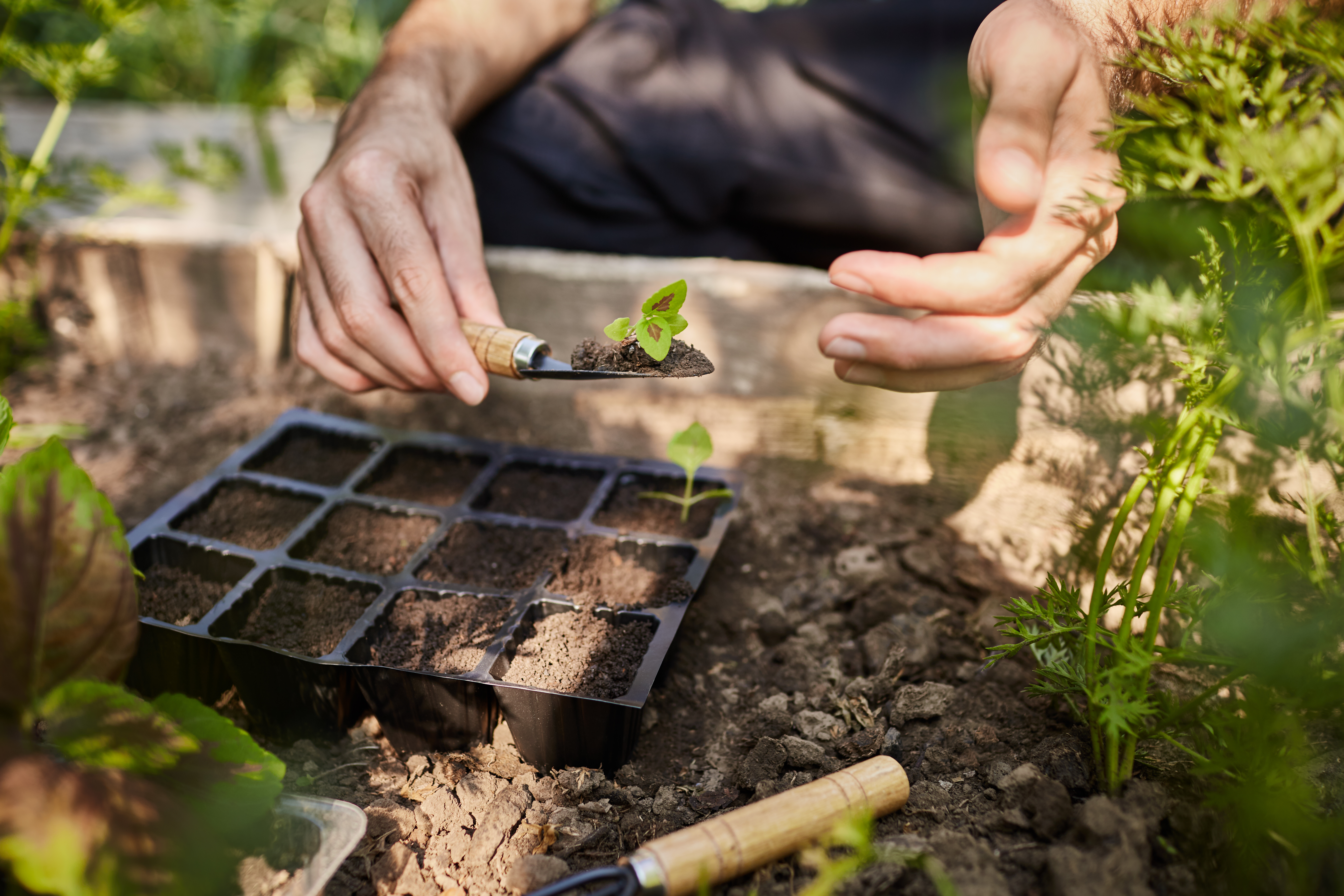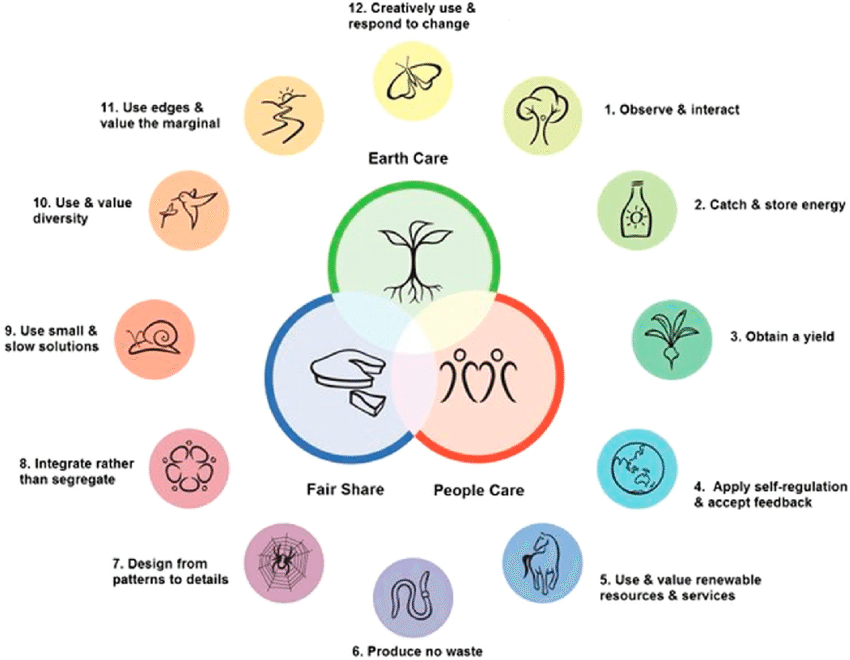Create a Permaculture Garden – Step By Step

This post is also available in:
This post is also available in:
![]() Ελληνικά (Greek)
Ελληνικά (Greek)
Nowadays, more than ever, we have to focus not only on the intensification of the production process but also on its sustainability. From the field/farm to the consumer, we need to ensure that the whole process adheres to the principles of sustainable development and environmental consciousness regarding both the quantity and quality of the products.
“Permaculture is a set of permanent systems for persistent human existence”.
Bill Mollison
So, anyone wishing to produce their own food in a sustainable system should consider permaculture gardening. Building a vegetable garden using permaculture principles enables you to rely on organic growing processes to provide abundant fresh fruits and vegetables.
But first, let us take a look at the definitions…
What is natural Permaculture?
Permaculture is defined differently based on how the field has grown through time. The term system was first defined in 1978 as “an integrated, evolving system of perennial or self-perpetuating plant and animal species useful to man … in essence, a complete agricultural ecosystem, modeled on existing but simpler examples” (Mollison & Holmgren, 1978, p. 1). Although the emphasis was still on agriculture, the definition had been expanded by 1988 to cover more aspects of human settlement: “Permaculture is the conscious design and maintenance of agriculturally productive ecosystems which have the diversity, stability, and resilience of natural ecosystems. It is the harmonious integration of landscape and people, sustainably providing their food, energy, shelter, and other material and non-material needs” (Mollison).
What Is Permaculture Gardening?
Permaculture gardening starts with designing the garden around (in accordance with) the environment. This means adapting to the local ecosystem. To design a permaculture garden, the grower needs to consider the needs and principles of the natural ecosystem. Permaculture gardening focuses mainly on the gradual enrichment of soil with nutrients to improve its quality characteristics. In this way, the earth is renewed, and at the same time, the plants are healthier.

What are the principles of Permaculture?
Many confuse the concept of permaculture with organic farming or Regenerative Agriculture. The main difference between these terms is that permaculture has certain principles the farmer must follow. Permaculture’s co-creator, David Holmgren codified the following first twelve principles:
- Observe and Interact
- Catch and Store Energy
- Obtain A Yield
- Apply Self-Regulation and Accept Feedback
- Use and Value Renewable Resources and Services
- Produce No Waste
- Design from Patterns to Details
- Integrate Rather than Segregate
- Use Small and Slow Solutions
- Use and Value Diversity
- Use Edges and Value the Marginal
- Creatively Use and Respond to Change
Apart from the principles that are mentioned above, permaculturist has to consider the following three ethical tenants:
- Care for the earth
- Care for people
- Fair share (return any or share any surplus or waste)

Image source: https://permaculture.org.nz/content/principles
Both principles and ethical tenants lay the groundwork for designing your garden. Now that you have the necessary mentality, let us see how to start your permaculture garden in detail, step by step.
How To Start a Permaculture Garden – Step By Step
Step 1 – Choose your field-spot
Permaculture relates to the farmer’s ability to adapt his crop to the existing ecosystem. So the first step to starting such a garden is to familiarize yourself with your surroundings and local flora and fauna. This means seeing what plants are growing in that particular area and recognizing any insects or predators that might be there as well. In addition to the soil, you should observe the sun’s direction and the plot’s slope (if any), as this is directly related to the irrigation strategy that could be applied. All of these unique features that your field has are important to give you the first impression of your garden design.
Step 2 – Planning for planting
The size of the garden will partially determine this; the project’s scope can range from a small balcony container garden to a large food forest.
Whether you want a standard vegetable garden with a few permaculture design elements or a full-scale, over-stacked food forest design, you must decide “how much Permaculture” you want to put into the design. In any case, before you start planting, you can do some research on annuals and even perennials that can thrive in your garden. Intercropping is recommended since if you choose to grow two crops in the same area, you promote biodiversity. Additionally, the pest population is reduced with dispersal systems as different crops are hosts of different pests (antagonism among some species of pests). If you select your plant species wisely, you may get extra advantages from the synergetic relation among them. This means that the biology and characteristics of one plant can benefit another (for example, the taller plant can provide shade for the other). Finally, there is risk differentiation in the event of a sudden disease outbreak. Through intercropping, the risk is spread over two different crops rather than one, so the chance of total crop failure is significantly lower.
Step 3 – Design the layout of the plants-field
Once you are familiar with your environment and know the plants you want to grow, use this information to plan the garden’s design. During the planning process, there are several things to think about, some questions that may help you are listed below.
- Is there a slight slope in one part of your yard?
- Are there any waterlogging issues in a part of your field (check after rainfall)?
- What kind of animals and insect (beneficial or not) exists?
- What kind of machinery and tools are available (for cultivating the plants)?
- Which areas get more sun in the morning than in the afternoon (and the general sun exposure of the field per day)?
Some practical tips are to use plant stacking to maximize space. You can also grow herbaceous plants as a ground cover, shrubs as a middle layer, and trees as a top layer.
Step 4 – Thinking inside of the box
We may have said that permaculture is all about an alternative way of gardening, but when it comes to plants, we have to protect them as much as we can.
Building garden beds is one of the best ways to do so. Raised beds are ideal for permaculture gardening because you do not have to worry about the soil. Your raised beds should be 6-12 inches above the ground. This way, the nutritious ingredients remain intact. An alternative method for gardening without digging is leaf mulching. Leaf mulching creates a plantable area by layering compostable materials such as straw, cardboard, wood crisps, and leaves over the grass to create soil without disturbing existing tillage.
Step 5 – Mono-cultures, Poly-cultures, and Companion Plants – put them in order
When you begin planting, you must first consider where you will place the perennials. The reason is that perennials grow over time and thus occupy a significant part of the garden for some time.
It is essential to choose native plants that are best adapted to the local conditions and microclimate.
You can plant perennials from seed, but many of them, like asparagus or fruit trees, take several years to yield. Therefore, getting some transplants or bare seedlings is best to minimize the growing time and speed up the harvest.
Once you find the perennials you like, you can start planting. If you have the budget, planting a little closer than recommended is okay. Dense planting will prevent weeds from growing. That way, you can choose the healthiest plants later and remove the rest for compost.
At this time, you can also start co-cultivating, for example, flowers to attract pollinators.
Including edibles in your landscaping is also important. The permaculture garden combines decorative and food plants. Bee balm works in harmony in the middle of your vegetables because it is a pollinator magnet. Thus, rhubarb does not necessarily need to be planted in the same spot as your vegetables.
Your permaculture garden may not look like a garden yet, since you have only planted perennials so far. In the first few years of your garden, you’ll want to add some annuals to fill the extra space while your perennials are still taking root.
The good news is that most of the widely consumed vegetables are annuals (e.g. beans, peas, tomatoes, peppers, squash, etc.). You can also add flowering plants and lots of greenery to give a permaculture look to the garden.
If you rely on your garden for either food or income, annuals will definitely make up the bulk of the two in the early years.

- Extra tip:
Spot planting is useful for covering smaller areas. You can dig a hole or remove a small portion of the lawn and then plant it in the ground. The advantage of spot planting is that this method allows the plants to grow immediately. If you want to create a garden and it is already spring or summer, this is the better option for you because the temperature of the soil is higher for more extended periods. The downside is that nutrients like mulch are not added to the soil. Therefore, you may need to amend the soil with compost or organic slow-release fertilizer. Covering the area with straw after planting is also a good idea to suppress weeds and retain water.
Step 6 – Soil and water conservation
Fertilization and irrigation are necessary to ensure the vigor of our plants. In a permaculture garden, it is best to avoid using chemical fertilizers as much as possible. Chemical herbicides are incompatible with permaculture gardening principles, so a layer of organic mulch after planting to suppress weeds will help our soil maintain the humidity levels. In addition to organic mulch, you can take advantage of your plant waste and produce compost. A hundred percent environmentally friendly fertilizer, rich in organic matter and more than twenty other nutrients. Compost costs you nothing, as it may be somewhere in your garden. With minimal equipment and a bin, you can take advantage of a natural process and have your fertilizer.
Similarly, the watering system again needs to be efficient and sustainable. Ensure you use as much water as your garden needs to thrive, and never waste water. A low-waste drip irrigation system is ideal for direct soil irrigation with very little evaporation. You can also collect rainwater from your roof gutters to reuse in your irrigation system.
References:
- Mollison, B., Slay, R. M., Girard, J. L., & Girard, J. L. (1991). Introduction to permaculture.
- Mollison, B. (1988). Permaculture: a designer’s manual
- Holmgren, D. (2020). Essence of permaculture. Seymour, VIC, Australia: Melliodora Publishing.
- Holmgren, D. (2002). Permaculture. Principles and Pathways beyond Sustainability. Holmgren Design Services, Hepburn, Victoria.
- Ferguson, R. S., & Lovell, S. T. (2014). Permaculture for agroecology: design, movement, practice, and worldview. A review. Agronomy for sustainable development, 34, 251-274.
- Hemenway, T. (2009). Gaia’s garden: a guide to home-scale permaculture. Chelsea Green Publishing.
- Permaculture: A Key Driver for Sustainable Agriculture in Nepal, https://www.researchgate.net/publication









































































